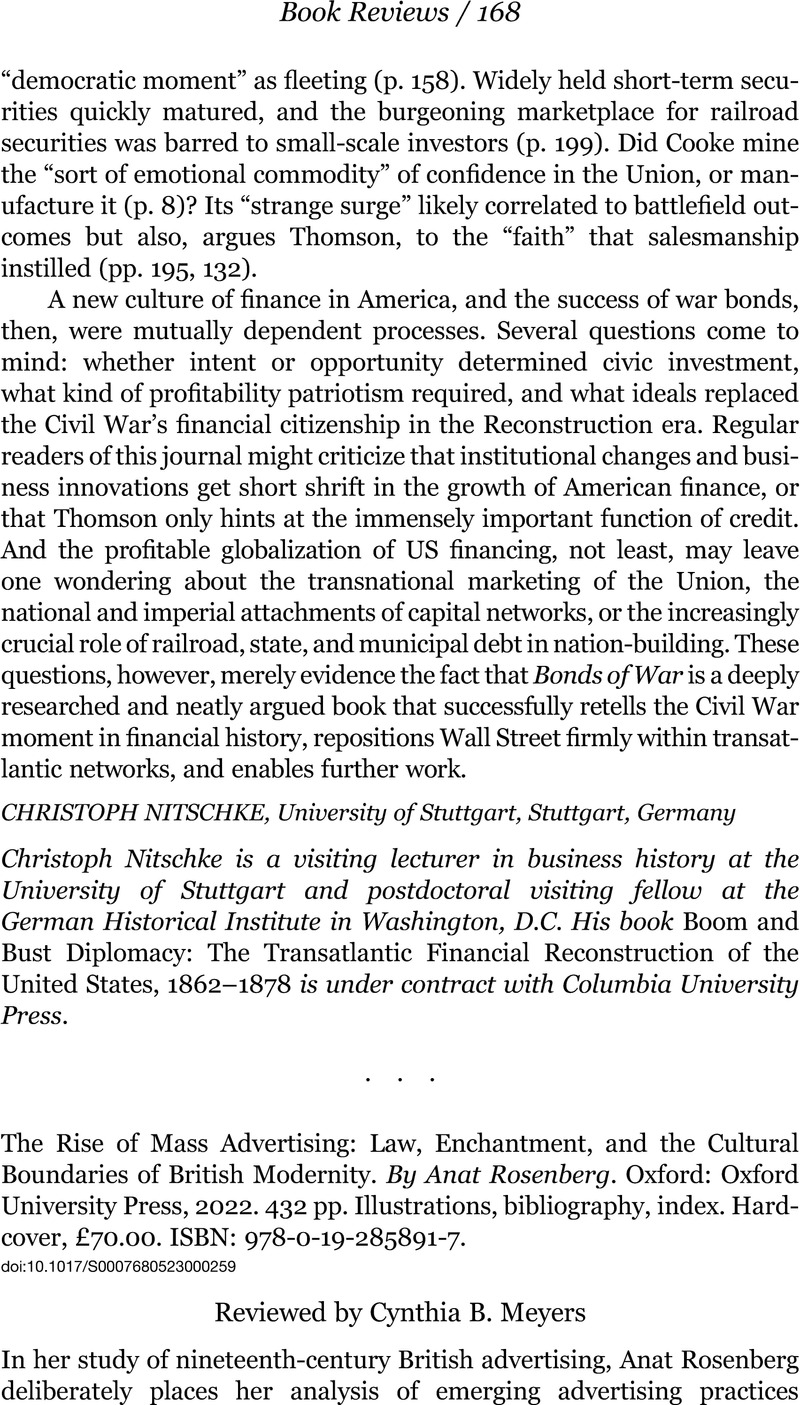No CrossRef data available.
Article contents
The Rise of Mass Advertising: Law, Enchantment, and the Cultural Boundaries of British Modernity. By Anat Rosenberg. Oxford: Oxford University Press, 2022. 432 pp. Illustrations, bibliography, index. Hardcover, £70.00. ISBN: 978-0-19-285891-7.
Review products
The Rise of Mass Advertising: Law, Enchantment, and the Cultural Boundaries of British Modernity. By Anat Rosenberg. Oxford: Oxford University Press, 2022. 432 pp. Illustrations, bibliography, index. Hardcover, £70.00. ISBN: 978-0-19-285891-7.
Published online by Cambridge University Press: 10 May 2023
Abstract
An abstract is not available for this content so a preview has been provided. Please use the Get access link above for information on how to access this content.

- Type
- Book Review
- Information
- Copyright
- Copyright © 2023 The President and Fellows of Harvard College


